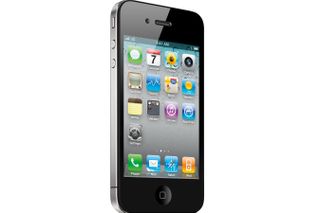How do you solve a problem like a Death Grip?
The Death Grip problem is real, but how can manufacturers deal with it?

The so-called Death Grip' that took hold of Apple's jugular last year was not phony - it was real, research has shown.
In fact, it appears the fault could affect numerous smartphones and, what's more, cases will not help solve the issue, as Apple thought it might do when addressing the iPhone 4 Antennagate fiasco last year.
The findings from Bristol University researchers could affect millions of smartphone owners across the world.
"The problem of antenna detuning is not restricted to MIMO [multiple-input and multiple-output] enabled devices and a standard GSM or 3G phone will also have the type of problems described," Mark Beach, professor of radio systems engineering in the Department of Electrical & Electronic Engineering at Bristol University, told IT PRO.
"The apps that folks run on smartphones requiring more wireless connectivity and expectations of a low latency response highlight the research challenges identified in our paper."
What to do
The findings will leave many wondering what can be done to ensure the Death Grip does not strangle their smartphone use.
Get the ITPro. daily newsletter
Receive our latest news, industry updates, featured resources and more. Sign up today to receive our FREE report on AI cyber crime & security - newly updated for 2024.
Beach offered a few possible ways to kill the problem off for good.
"Our approach is to dynamically retune the antenna match," he explained.
"The match refers to the amount of power transferred from the antenna connector to the antenna element. The hand, head, body or other object will modify the electrical match, so the antenna feedline needs retuning to maximum ... power."
He explained the use of a radio frequency microelectromechanical system (RF MEMS), involving the movement of sub-millimeter-sized parts, could open up great possibilities "for linearly retuning" antennas and radio frequency filters.
Interestingly, the external antennas found on old mobile phones are rather good in terms of radio frequency performance.
But, as pointed out by Beach, such mobiles are not particularly stylish and it's unlikely audiences would ever revert to using such devices.
Industry impact
So Apple's answer to the issue may not have helped much and it remains to be seen whether manufacturers will take anything of what Beach and his team discovered on board.
Companies could also approach researchers themselves and Bristol University has a number of ways in which it collaborates with industry.
In this particular field, companies can go through Bristol's Centre for Communications Research, either through multiparty activities, one-to-one projects, or via the university's new Centre for Doctoral Training.
As for the future, Beach is planning to address the sometimes excessive power consumption levels in wireless networks and devices.
Again, many users would appreciate any industry collaboration to get better products to market quicker.
Tom Brewster is currently an associate editor at Forbes and an award-winning journalist who covers cyber security, surveillance, and privacy. Starting his career at ITPro as a staff writer and working up to a senior staff writer role, Tom has been covering the tech industry for more than ten years and is considered one of the leading journalists in his specialism.
He is a proud alum of the University of Sheffield where he secured an undergraduate degree in English Literature before undertaking a certification from General Assembly in web development.





